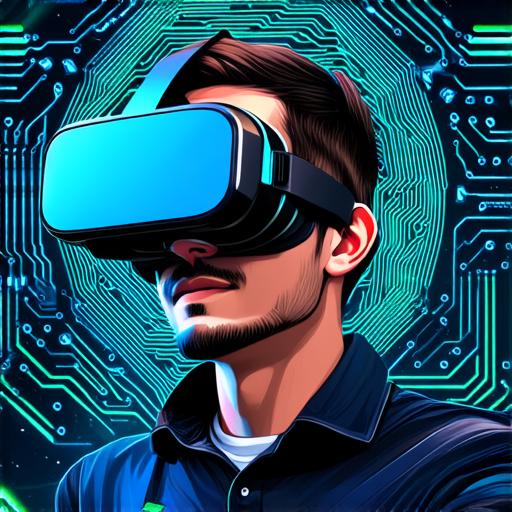Augmented Reality (AR) App Development Guide
Augmented reality (AR) is quickly becoming one of the most popular technologies in the tech industry. With its ability to enhance real-world environments with digital elements, AR apps have a wide range of applications across various industries, from gaming and entertainment to education and healthcare.
Step 1: Define Your App’s Purpose
Before you start developing your AR app, it’s essential to define its purpose clearly. What is the goal of your app? What do you want to achieve with it? Answering these questions will help you create a clear concept and direction for your app.
For example, let’s say you want to develop an AR app that helps people learn about different types of plants. Your app could use AR technology to superimpose digital information about the plant onto the real world, such as its name, scientific classification, and care instructions. This would help users identify and care for different types of plants more effectively.

Step 2: Choose Your AR Development Platform
Once you have a clear concept for your app, it’s time to choose an AR development platform. There are several options available, including Unity, Unreal Engine, and Vuforia. Each platform has its own strengths and weaknesses, so it’s essential to research them thoroughly before making a decision.
Step 3: Design Your App’s User Interface
The user interface (UI) of your app is essential to ensure that users can interact with the digital elements in a natural and intuitive way. When designing your app’s UI, it’s crucial to consider factors such as usability, accessibility, and visual appeal.
For example, you could use a combination of buttons, sliders, and menus to allow users to control the AR experience. You could also incorporate gesture recognition technology to enable users to interact with digital elements using hand gestures.
Step 4: Develop Your App’s AR Content
The AR content of your app is what will bring it to life, so it’s essential to create high-quality and engaging content that resonates with your target audience. This could include 3D models, animations, and interactive elements that respond to user input.
When developing your AR content, it’s important to keep in mind the limitations of AR technology, such as device compatibility and tracking accuracy. You may need to optimize your content for different devices and environments to ensure a seamless user experience.
Step 5: Test and Refine Your App
Once you have developed your app’s AR content, it’s time to test it thoroughly to identify and fix any issues that may arise. This could involve testing your app on different devices and environments, as well as soliciting feedback from beta testers and early adopters.
Refining your app based on user feedback is crucial to ensuring its success. You may need to make changes to the app’s UI, AR content, or development platform to address any issues that users encounter.
Case Study: IKEA Place
IKEA Place is an excellent example of an AR app that has successfully integrated AR technology into a retail environment. The app allows users to visualize IKEA furniture in their homes before making a purchase, helping them make more informed decisions and reducing the likelihood of returns.
The app’s success can be attributed to several factors, including its intuitive UI, high-quality AR content, and seamless integration with the IKEA e-commerce platform. Additionally, the app has received positive feedback from users, with many citing it as a game-changer in the furniture shopping experience.
